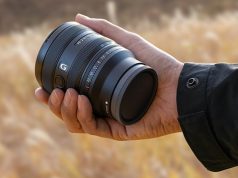What market is larger than home or portable audio, digital cameras, and retail printing? If you answered the CE/Imaging accessories market, you’d be right.
While flat panel TVs, kiosks and DSLRs garner the headlines and the glamour, accessories often quietly go about their business of enhancing products for consumers and making money for retailers and manufacturers.
According to CEA’s U.S. Sales & Forecasts, the accessories market will grow a healthy 15 percent in 2007, reaching $8.6 billion in wholesale dollars. Add in primary batteries and blank media and the figure tops $20 billion. Looking ahead, CEA forecasts the accessories market to generate about $9.3 billion in sales in 2008, an 8 percent gain.
Hockey Stick Growth
To further put the depth and breadth of the accessories market into context, consider the category in terms of unit sales. In 2007, more than 300 million units of CE/Imaging accessories (excluding primary batteries and blank media) will be sold through U.S. retail channels.
This begs the question: what drives growth in the accessories market? Many factors influence the market, but the key growth drivers can be summarized as follows:
• Overall market growth
• New product introductions
• Changes in consumer behavior
• Changes to retail channels and how accessories are sold
As an “attachment” product, accessory sales are often a function of hardware sales. Due to the digital transition, hundreds of millions of units of CE/Imaging products have entered the homes, cars and pockets of U.S. consumers, with wireless phones, TVs, PCs, portable storage devices, digital cameras, and DVD players leading the way. With every core product purchase comes the potential for an accessories sale.
Behavioral Changes
Some CE products change consumer behavior. Conversely, some consumer behaviors create demand for and impacts how CE/Imaging products are designed and sold. Looking at the first situation, notable examples include the new wave of affordable DSLRs, wireless phones, laptop PCs and wireless Internet.
Consumers now conduct business or manage their personal lives anywhere at anytime. This shift in consumer behavior created an entire class of accessory products designed to enhance and support this “on-the-go” lifestyle. Products such as a variety of Bluetooth wireless products, portable flash storage and notebook PC accessories are just a few examples of accessories created as a result of these changes.
Looking at the second situation, the desire to promote one’s individuality and unique personality may take many forms. CEA’s Youth Wireless Behaviors study suggests it’s not uncommon for teens to customize their products as a show of individualism. As a result of this behavior, accessory designers have introduced colorized faceplates, designer carrying cases, personalized thumb drives and a host of other products to meet the demand for customization. This helps explain the 10 million units of portable digital media player carrying cases expected to be sold in 2007.
Other examples of changes in consumer behavior include greater environmental awareness; the graying of America; the desire to be more health conscious; and the desire to cocoon. Expect these macro trends to continue to spawn new CE/Imaging products and accessories as we move through 2008 and beyond.
Online Shoppers
Undoubtedly, the most significant new development in retail in the past decade has been the emergence of the online retail channel. According to Shop.org and CEA estimates, the online channel generated in excess of $25 billion in sales of consumer technologies in 2006. According to CEA’s The CE Accessories Market: Insights and Opportunities study, 14 percent of online consumers purchased a CE/Imaging accessory product via an online retailer in 2006. Buyers cite a number of factors for their decision to buy online, including convenience (67 percent), price (61 percent), no sales pressure (24 percent ) and product selection (21 percent).
Within the physical store environment, new technologies and data mining techniques help retailers to strategically merchandise and arrange products. The classic example of this strategy entails placing batteries near the corresponding device requiring power. Sophisticated retailers take this to the nth degree and optimize stores for maximum attachment sales.
CEA consumer behavior research reveals that a significant portion of accessory buyers make spur-of-the-moment (17 percent) or quick decision (less than one hour – 34 percent) purchases. At 51 percent of all accessory buyers, these segments rely heavily on in-store information sources, such as the information found on the packaging of accessory products (47 percent) and in-store displays (34 percent). Thanks to strong market growth, new product introductions, changes in consumer behaviors and changes to retail channels and how accessories are sold, the CE/Imaging accessories market has prospered. Despite the good times enjoyed by those playing the role of hidden giant, nothing is more dangerous in this industry than resting on its laurels. Manufacturers and retailers in the accessories space are wise to continue studying key short-term and long-term growth drivers to ensure success today and tomorrow. yy
— Tim Herbert, CEA’s Senior Director of Market Research





